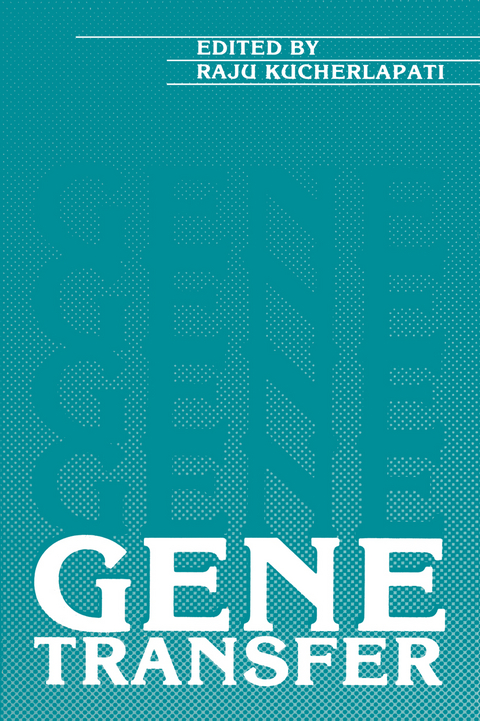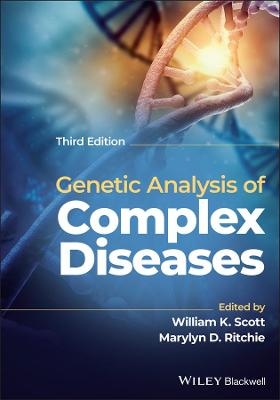
Gene Transfer
Springer-Verlag New York Inc.
978-1-4684-5169-6 (ISBN)
Genetic analysis of microbial systems provided us with the foundation for un derstanding gene structure, expression, and regulation. It was long felt that the ability to generate mutants and conduct genetic studies in mammalian systems would prove to be equally useful. However, genetic analysis based on sexual systems is difficult in mammals because of the long generation times and the inability to perform controlled matings. As a result, genetic analysis of mam malian systems had to await the development of parasexual systems. This book is an attempt to bring together descriptions of a number of these parasexual systems. A common theme of all the parasexual systems is the transfer of genetic information from a defined source into a specific cell type. This volume deals with a number of methods of gene transfer into mammalian cells. The early methods of gene transfer involved transfer of relatively large amounts of genetic information. These include somatic cell hybridization, microcell fusion, and chromosome transfer, which constitute the first part of this book. Each of these methods has already proven to be of enormous value in arriving at a genetic understanding of the mammalian genome. Development of recombinant DNA methods, and the ability to introduce purified DNA into mammalian cells, has had a significant impact on our ability to dissect important aspects of mammalian gene expression and regulation. The second part of this book deals with gene transfer systems involving defined nucleic acid sequences.
1 Gene Transfer: A Perspective.- 2 Cell Hybridization and the 24 Human Gene Maps.- 1. Introduction.- 2. Somatic-Cell Hybridization and the Transfer of Whole Genomes.- 3. Somatic-Cell Hybrids for Gene Mapping.- 4. Regional Gene Mapping with Cell Hybrids.- 5. Markers for Mapping the Human Genome.- 6. High-Resolution Chromosome Mapping.- 7. The 24 Gene Maps.- 8. Conclusions.- References.- 3 Microcell Fusion and Mammalian Gene Transfer.- 1. Introduction.- 2. Mammalian Gene Mapping Using Microcell Hybrids.- 3. Monochromosomal Hybrid Panels.- 4. Genetic Analysis of Complex Phenotypes.- 5. Concluding Remarks.- References.- 4 Use of Metaphase-Chromosome Transfer for Mammalian Gene Mapping.- 1. Introduction.- 2. A Short History of Metaphase-Chromosome Transfer.- 3. Introduction of Novel Dominant Markers.- 4. Metaphase-Chromosome Transfer of Introduced Selectable Markers.- 5. Applications and Prospects.- 6. Conclusions.- References.- 5 Vectors for Gene Transfer Derived from Animal DNA Viruses: Transient and Stable Expression of Transferred Genes.- 1. Introduction.- 2. Vectors That Permit Stable or Transient Expression of Transferred Genes.- 3. Vectors That Permit the Maintenance of Transferred Genes as Plasmids.- 4. Comparisons and Conclusions.- References.- 6 Retrovirus Vectors for Gene Transfer: Efficient Integration into and Expression of Exogenous DNA in Vertebrate Cell Genomes.- 1. Introduction.- 2. Retrovirus Life Cycle.- 3. Natural Retrovirus Vectors.- 4. Types of Retrovirus Vectors.- 5. Uses of Retrovirus Vectors.- 6. Problems of Retrovirus Vectors.- 7. Detailed Description of Types of Retrovirus Vectors.- 8. Summary.- References.- 7 Transgenic Mice: Gene Transfer into the Germ Line.- 1. Introduction.- 2. Regulation of Specific Gene Expression in Transgenic Mice.- 3. Physiological Consequences of Altered Gene Expression in Transgenic Mice.- 4. Introduction of Viral Transforming Genes into Embryonic Cells and Transgenic Mice.- 5. Cellular Oncogenes in Transgenic Mice.- References.- 8 Expression of Transfected Genes.- 1. Introduction.- 2. Methodology.- 3. Expression in L Cells.- 4. Inducible Genes in Fibroblasts.- 5. Expression of Globin Genes.- 6. Expression of Immunoglobulin Genes.- 7. Expression of Cell-Surface Antigens.- 8. Summary.- References.- 9 Mutation of Autonomously Replicating Plasmids.- 1. Introduction.- 2. Spontaneous Mutation of Autonomously Replicating Plasmids.- 3. Induced Mutation of Autonomously Replicating Plasmids.- 4. Summary.- References.- 10 Gene Purification by Transfection Methods.- 1. Introduction.- 2. Methods of Isolation.- 3. Developing Approaches.- 4. Conclusions.- References.- 11 Applications of Gene Transfer in the Analysis of Gene Amplification.- 1. Introduction.- 2. Selection of Transformants with Amplified Sequences.- 3. Coamplification of Linked Genes.- 4. Position Effects in Gene Amplification.- 5. The Effect of “Nuclear Environment” on Gene Amplification.- 6. Conclusions and Perspectives.- References.- 12 Retroviral Integration and Insertional Mutagenesis.- 1. Introduction.- 2. Integration Reaction: Sequences and Structures.- 3. Integration Enzymes and Factors.- 4. Insertional Activation and Transformation.- 5. Insertional Mutagenesis.- References.- 13 Homologous Recombination in Mammalian Somatic Cells.- 1. Introduction.- 2. Mitotic Recombination.- 3. Recombination between Exogenously Introduced Homologous Sequences.- 4. Use of Autonomously Replicating Molecules.- 5. Factors That Influence Homologous Recombination.- 6. Recombination between “Cellular” Sequences and Plasmid DNA.- 7.Recombination with a Cellular Sequence.- 8. Cell-Free Systems to Study Recombination.- 9. Summary and Conclusions.- References.- 14 Intrachromosomal Recombination in Mammalian Cells.- 1. Introduction: Method for Studying Recombination between Chromosomal Sequences.- 2. General System.- 3. Deriving Single-Copy Parental Cell Lines.- 4. Analysis of Intrachromosomal Recombination between Direct Repeats.- 5. Position Effects on Gene Conversion.- 6. Factors That Affect Gene Conversion.- 7. Utility of Recombination Studies Employing Inverted Repeats.- 8. Coconversion.- 9. Fidelity of Conversion.- 10. Double Dominant Plasmids to Study Homologous Recombination.- 11. Summary 406 References.- 15 Developments Leading to Human Gene Therapy.- 1. Introduction.- 2. Genetic Diseases as Models for Gene Therapy.- 3. Transplantation in the Treatment of Genetic Diseases.- 4. Gene-Transfer Methods.- 5. Experimental Gene Transfer of Human-Disease-Related Genes.- 6. Ethical Considerations.- 7. Summary.- References.
| Zusatzinfo | 462 p. |
|---|---|
| Verlagsort | New York, NY |
| Sprache | englisch |
| Maße | 152 x 229 mm |
| Themenwelt | Sachbuch/Ratgeber ► Natur / Technik ► Garten |
| Medizin / Pharmazie ► Medizinische Fachgebiete | |
| Studium ► 2. Studienabschnitt (Klinik) ► Humangenetik | |
| Naturwissenschaften ► Biologie ► Botanik | |
| Naturwissenschaften ► Biologie ► Zoologie | |
| ISBN-10 | 1-4684-5169-3 / 1468451693 |
| ISBN-13 | 978-1-4684-5169-6 / 9781468451696 |
| Zustand | Neuware |
| Haben Sie eine Frage zum Produkt? |
aus dem Bereich


